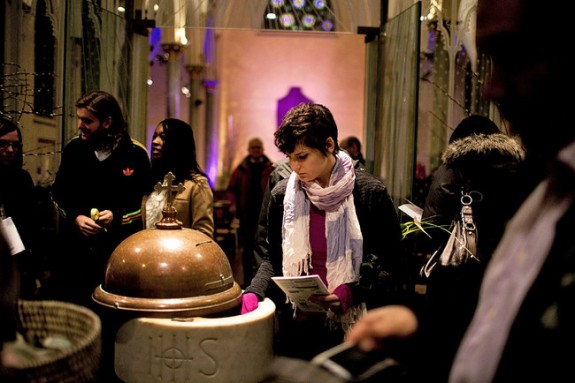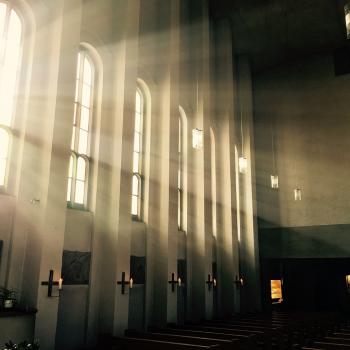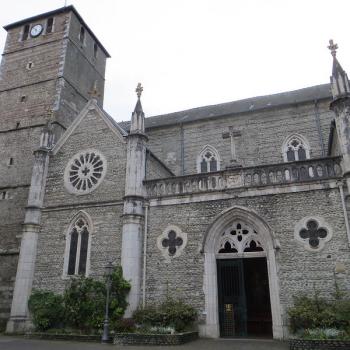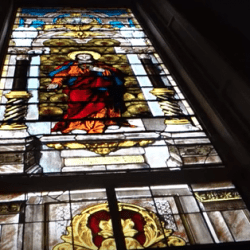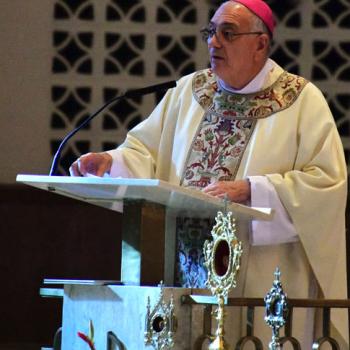I missed this on Good Friday — I was otherwise engaged — but it’s worth a read. It looks at a growing phenomenon in the Church: people seeking out parishes outside of their geographic boundaries.
From the New York Times:
St. Boniface attracts an average of 700 people a weekend, remarkable when only about a third of Roman Catholics registered with the Diocese of Brooklyn and the Archdiocese of New York attend services on an ordinary Sunday, according to a spokesman for the organizations. Social justice programs, like a secular nonprofit group that helps support a community in Kenya, and homilies flecked with literary allusions draw a diverse and impressive crowd, with many writers, civic leaders and professionals in the mix.
The church’s high ritual and its open and inclusive approach appeal to people born to the faith, converts, Christians of other denominations and, particularly, young families. The priests have also made a special point of welcoming Catholics who have been distressed by some of the church’s politics or its sometimes rigid hierarchy.
St. Boniface is an example of an intentional parish, a phrase some members of the clergy use to describe a destination church that attracts people from beyond its geographic boundaries. Many gay and lesbian Catholics travel to the Church of St. Francis Xavier in Chelsea. Some traditionalists attend the Latin Mass at the Church of St. Agnes in Midtown, and foreign language speakers often go distances to hear Mass in their mother tongues. But St. Boniface stands out because the vast majority of those who worship there do not live within the parish’s boundaries but come from across Brooklyn and Manhattan, some even from the suburbs.
There are many denominations of Protestants, allowing worshipers to choose churches that reflect their values and priorities. But until recently, parish shopping was unheard of among Catholics, who, for generations, went lockstep to their local churches.
Indeed, Catholics in New York’s immigrant enclaves often identified themselves according to parish, not neighborhood.
“It was just the vernacular, ‘Which parish do you live in?’ ” recalled Justice Robert J. Miller of the New York State Supreme Court, who grew up in Brooklyn. He now drives to St. Boniface from Ditmas Park, Brooklyn, but in the 1950s, he said, the parish “was your world.”
Catholics no longer live in a Catholic world, explained David Gibson, author of “The Coming Catholic Church: How the Faithful Are Shaping a New American Catholicism,” and a St. Boniface parishioner.
“Catholicism now is more about making choices,” he said, and for some, that means traveling to parishes where they feel affirmed.
“Meeting them where they are” is a mantra among St. Boniface’s five priests and a lay brother, who make it a point to invite new faces to monthly home-cooked lunches in the rectory.
But the inclusive philosophy has a stickier side. While the priests hold true to and convey all the church’s teachings, whether from the Vatican, the United States Conference of Bishops or the Diocese of Brooklyn, they accept that not everyone in the pews does.
When a lesbian couple approached one of the priests, the Rev. Mark Lane, about baptizing their child, they were afraid he would turn them away, he said. But they were welcomed. For Father Lane, 55, the parish’s openness simply reflected Christ’s teachings to love everyone. Even if that could be taken as an implicit critique of the church’s position on homosexuality, the parish did not make the family occasion into a cause.
“The danger is, you turn that into a platform and forget about the persons involved, and I think that’s wrong,” Father Lane said. The two mothers stood at the font with their child along with everyone else. “The symbol is visually powerful, but that’s enough.”

